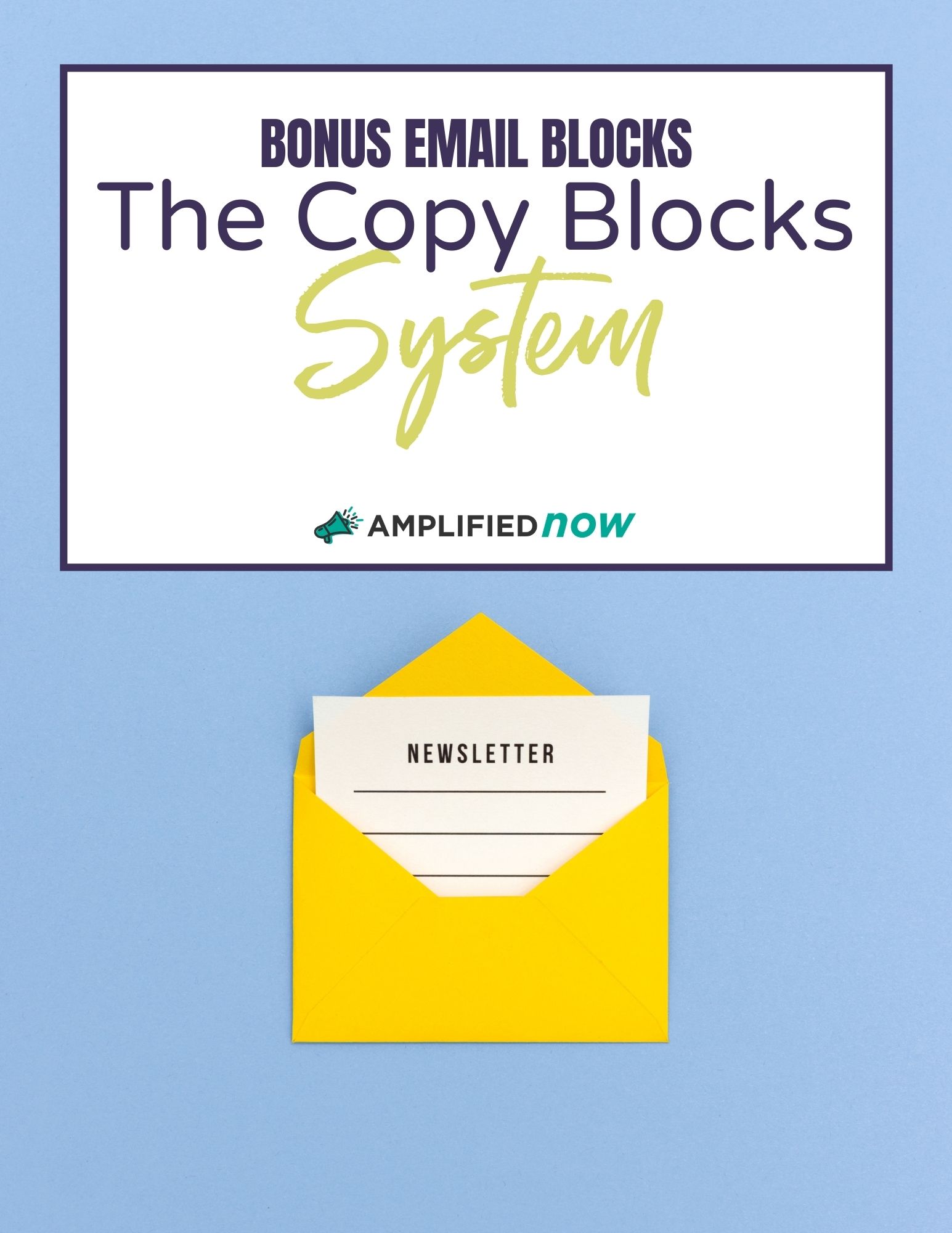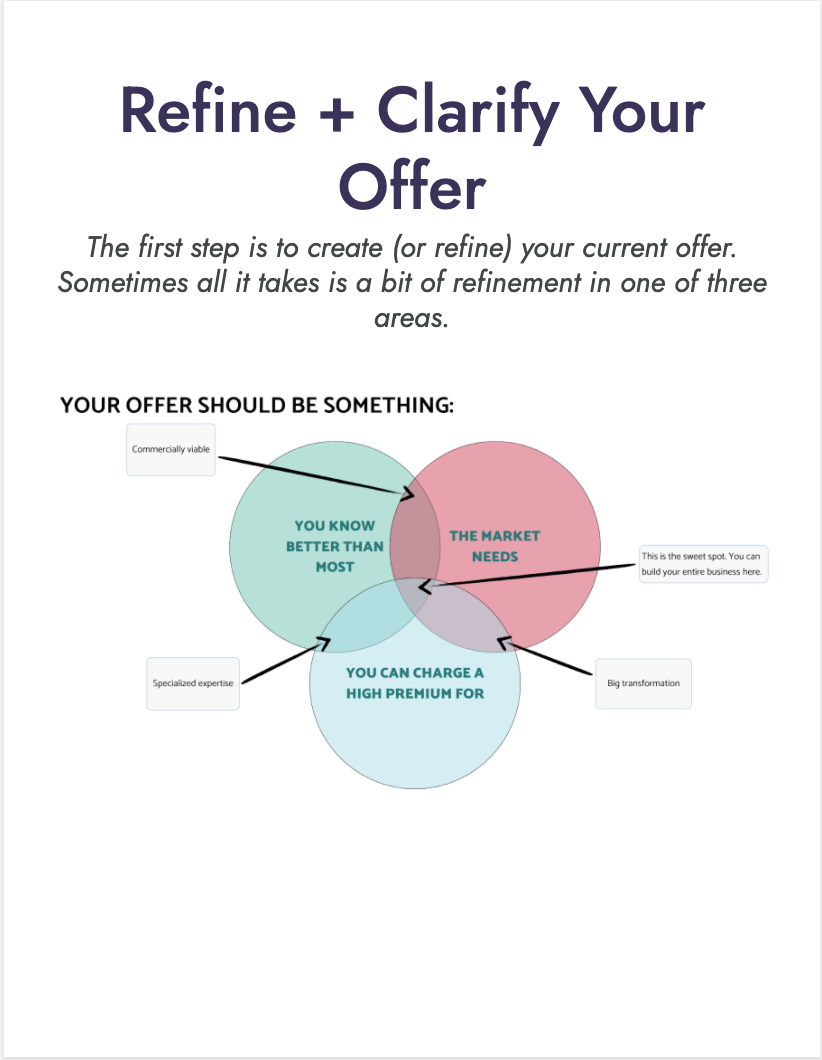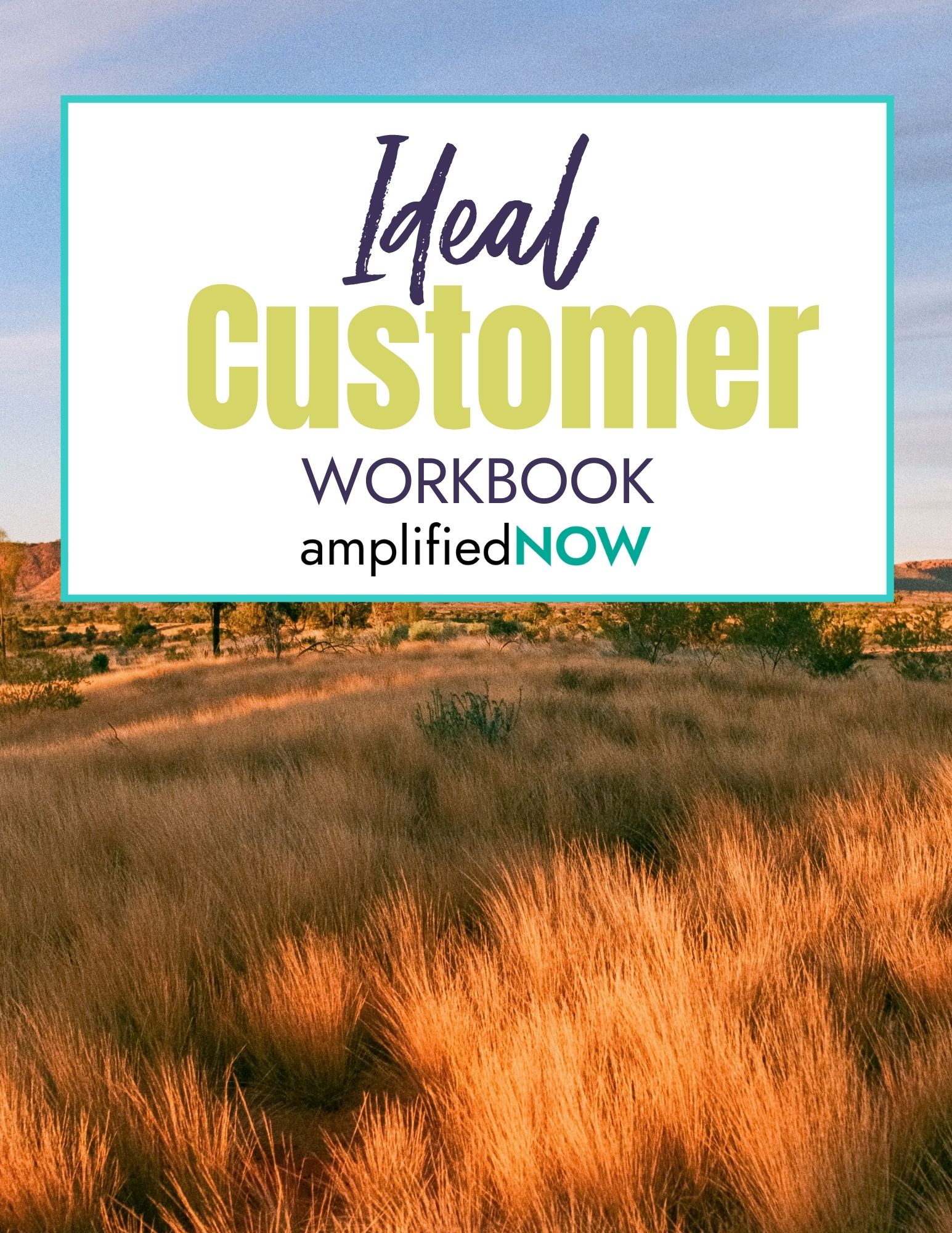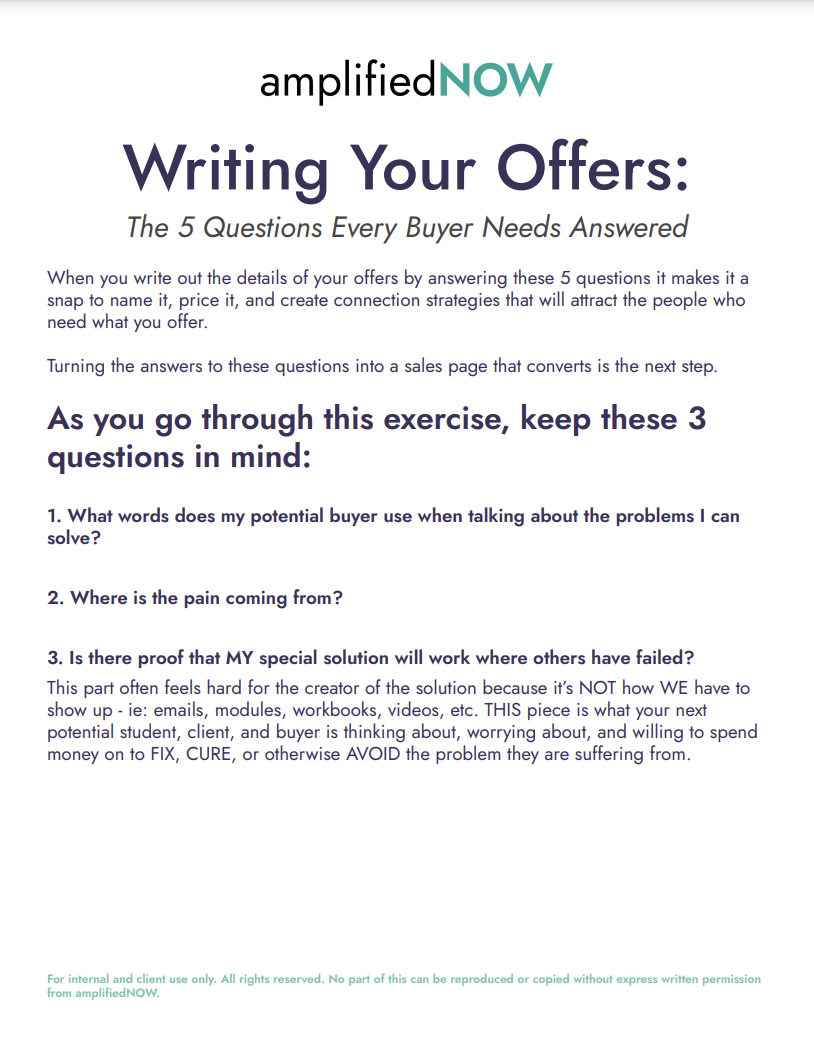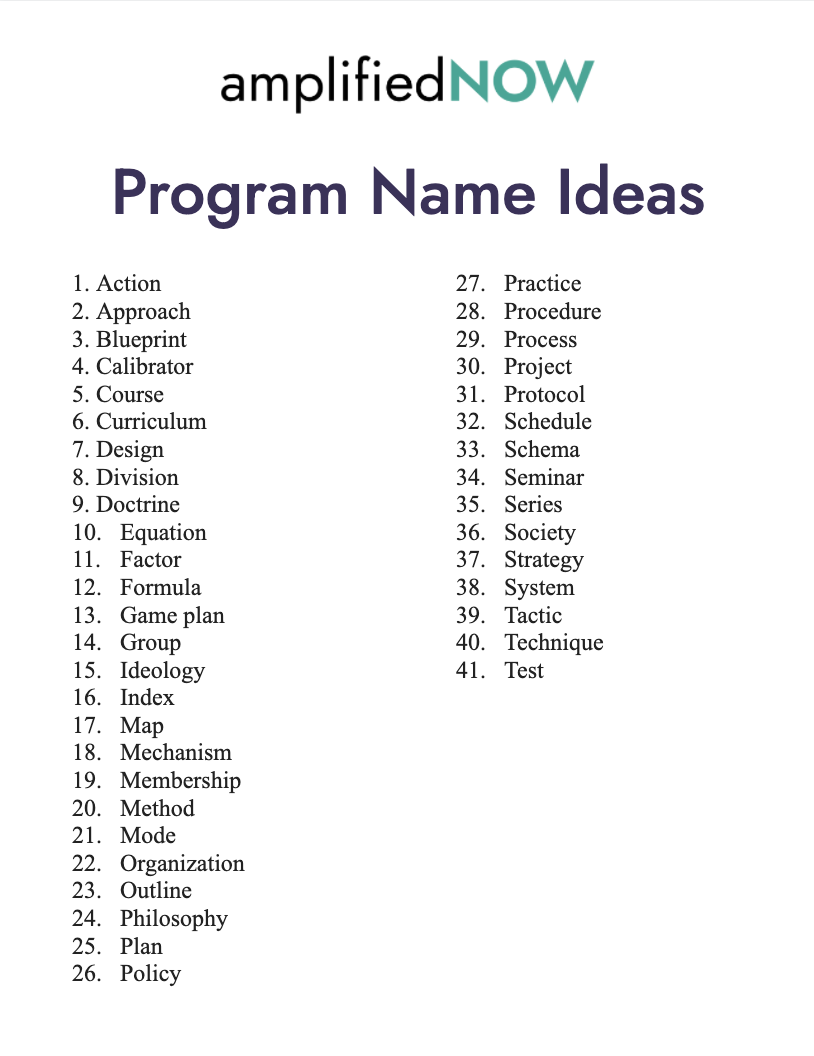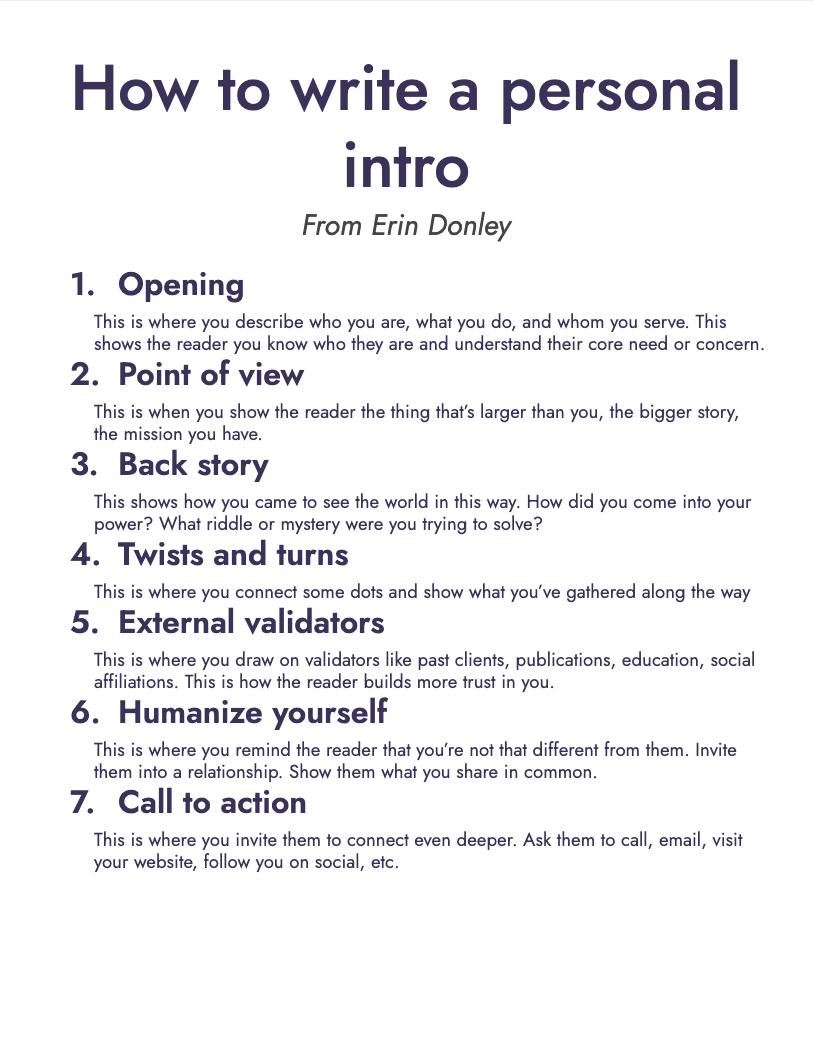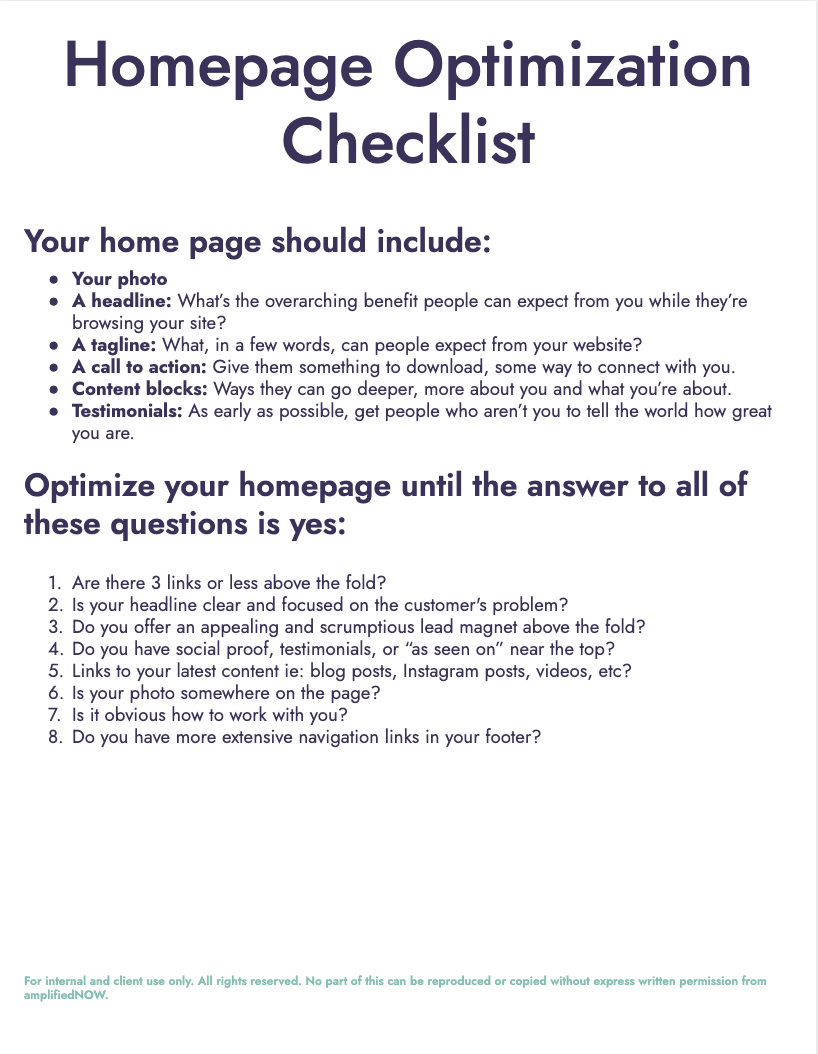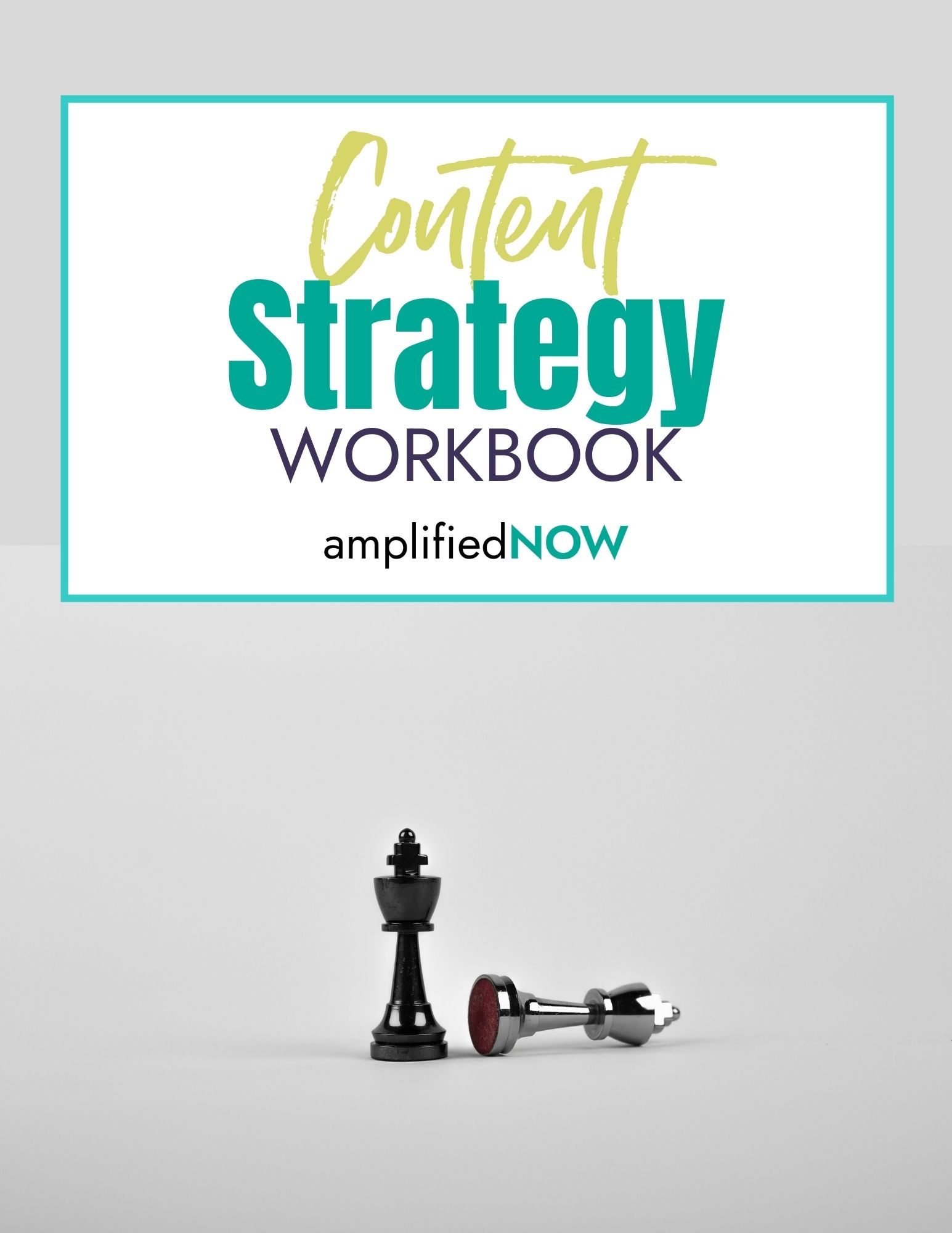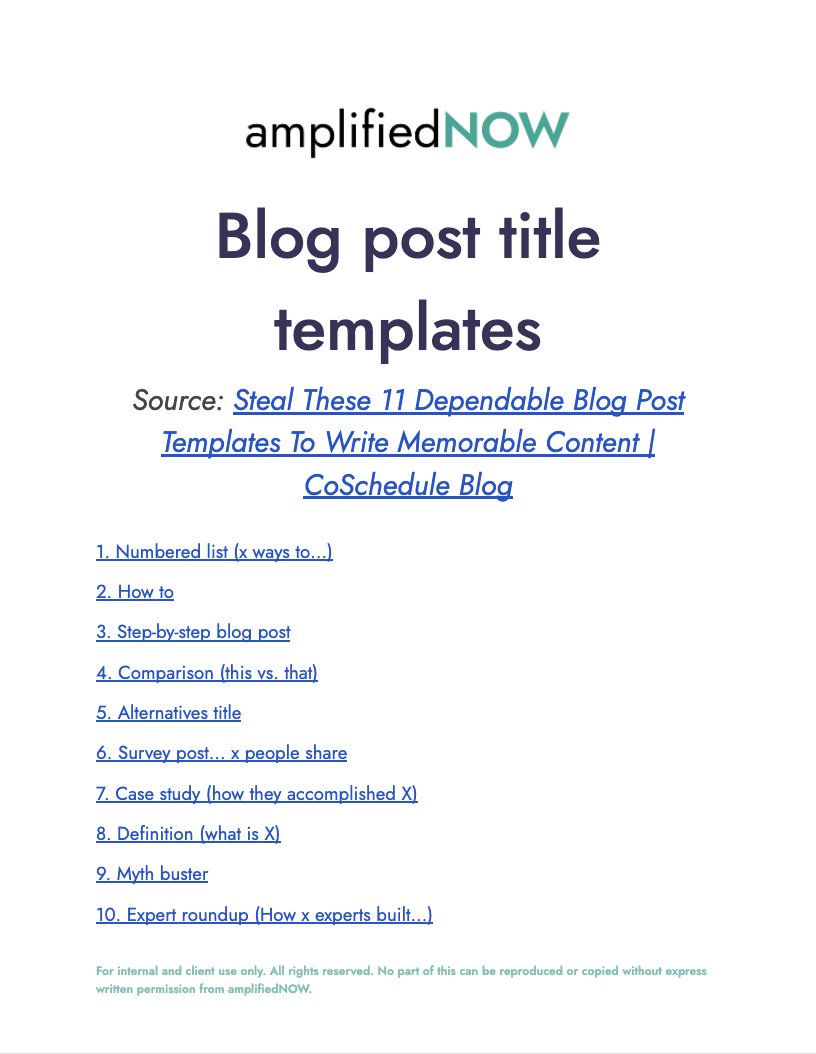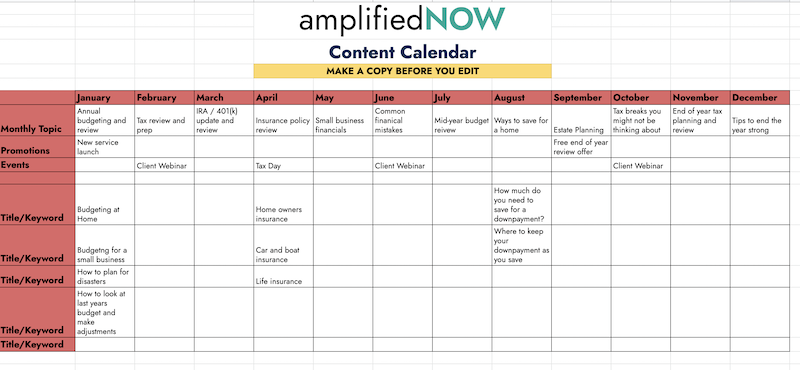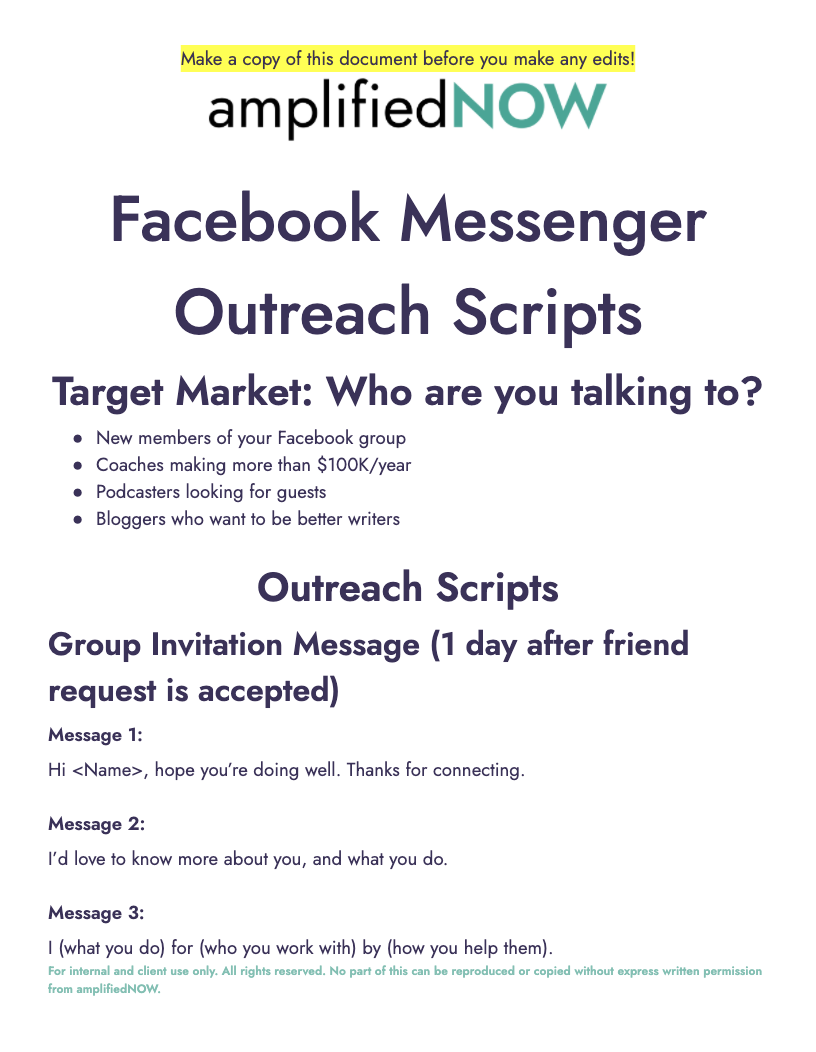Why coaching?
Maybe you have a product or service already. Maybe not. But there’s one way to start earning income on your experience right away, and that’s to set yourself up as a coach.
Right now, even if you don’t have any of the tech set up, you know enough about your topic of expertise that you could map out a coaching program and start offering it today.
In this playbook, we’re going to help you plan, create and implement an individual or one-on-one coaching program.

One:
Types of coaches
There are many different types of coaches out there. This list is a starting point, but in no way exhaustive of the types of coaching you can offer.
Life Coach
A Life Coach helps individuals to evaluate their thoughts and feelings, set goals, make changes and take action to change their lives. Niche possibilities: Divorcees, Mother returning to work, Retirees.
Financial Coach
A Financial Coach works with individuals or couples to take control of their finances and help them spend, save and plan for the future. Niche possibilities: Newly married couples, Single Executive women, Widows/Widowers.
Wellness Coach
A Wellness Coach can help with a variety of wellness-related issues including weight loss, healthy eating, and exercise. Niche possibilities: New mothers, People transitioning to vegan eating, Marathon runners.
Career Coach
A Career Coach helps individuals achieve their career goals by identifying ways to improve at work, options for targeted learning, or bringing balance to their lives. Niche possibilities include: People starting a new job, People passed over for a promotion, Architects.
Business Coach
A Business Coach helps business owners to set and achieve organizational goals. Niche possibilities: Bloggers, Solo-preneurs, Family-owned businesses.
Relationship Coach
A Relationship Coach focuses on creating healthy relationships between couples, families, or friends. Niche possibilities: Divorced women who are starting to date again, Couples who have lost a child, Families with a child diagnosed with an illness.
Executive Coach
An Executive Coach works with established executives who are looking to develop new skills, improve performance, or prepare for advancement. Niche possibilities: Start-up executives, Female executives, New executives.
Performance Coach
Performance Coaches work with employees and employers to improve performance, set goals, and create plans for professional growth. Niche possibilities: Students entering the workforce, Lawyers, Restaurant Owners.
Leadership Coach
A Leadership Coach works with people who want to move into a leadership role in their organization or leaders who need to improve their leadership performance. Niche possibilities: New leaders, Failing leaders, Leaders in Tech.
Team Coach
A Team Coach helps teams to place people in the right roles for them, build team effectiveness, and set and achieve goals. Niche possibilities: Newly combined teams, Failing teams, Sales teams.

Two:
Becoming a coach
Once you know what type of coaching you want to offer, your next step is to search for a problem that can be solved through your expertise and your thought leadership.
Why? Because people are willing to pay to solve problems.
The problem should be intense for someone because otherwise why would they want to solve it? The problem should also be something that a person can’t solve on their own, so it can’t be trivial.
If you have a nail and a hammer, you don’t have a problem — at least not for long. It’s going to be hard, if not impossible, for you to get much traction solving hammer and nail problems.
But most of all, the best problems should also uncover a deeper fear. It’s not enough for you to state a problem they know they have and want to solve. What is the root of the problem? Put another way, what’s the real issue? That is often where you can really connect with people.
The last piece is up to you. How do you, the expert, see the problem? If you can state the problem in your own words and show people how they can solve it, with you, you’ve set yourself up for success.
Resource: Refine and Clarify Your Offer
Who Will You Serve?
There’s a saying, “if you market to everyone, you’re marketing to no one.”
Once you’ve decided on the type of coach you want to become and the problem you will help solve, you’ll want to define your ideal customer.
It’s not enough to say women or lawyers, you need to get very specific so that you can speak their language and connect with them through your copy.
Don’t make the mistake of trying to appeal to the widest audience possible. The more you focus your attention on a specific type of person, the more people will identify with you, the better your copy will speak to them, and the more they believe that you can solve their problem.
You want to turn people away. It sounds crazy, but you really don’t want to work with everyone. Your program can’t help everyone and you want to be able to focus on those people you can truly help.
Resource: Ideal Customer Workbook
Pro tip: As a solopreneur, some past version of yourself is your ideal client. That’s how we’ve evolved to serve solopreneurs who are setting up their own marketing. We ARE solopreneurs who nerded out about marketing and have built a decent body of knowledge based on that learning.
Investigate your niche
Once you’ve chosen what to offer and who to offer it to, explore other offers in your niche. See how they are speaking about the customer's problems, framing their offers, how they post on social media, and what their websites look like.
Take notes on anything that catches your attention. Bookmark websites you like. Follow social media accounts that are interesting.
Basically, you want to see what others are doing to reach their customers and think about how you can put your own spin on it.
I am NOT encouraging you to copy. Far from it! You need to know what others in your space are doing so that you can position yourself correctly.
If there are things others are doing that you don’t agree with, talk about that. If there are methods that you don’t believe in, talk about that. This will give you tons of easy ideas to create content around and attract “your people.”
Do you need to get certified?
The quick answer… it depends.
What does it depend on? Your niche, the type of coaching you’ll offer and your experience helping people with this problem.
Some niches, such as fitness or finances don’t require certifications, but you’ll set yourself up for quicker success by getting certified. The coaching profession is not regulated and so certification can increase your credibility and make selling your services easier.
But you don’t need to get certified to get started. You can start working with clients and then decide if you want to go through a certification program.
Check out the International Coaching Federation or whichever group offers certification programs in your niche.
But a word to the wise here, too: don’t let lack of certification keep you from launching your coaching business. Recognize this for what it is… a very effective stalling technique.

Three:
Outline your offer
Now that you know the problem you're going to help solve and who you’ll be working with, it’s time to outline your program.
Results/Outcomes
First, decide on the outcome you want to achieve. The overarching problem might be too big to solve in one program. You might decide to offer three programs for people experiencing different aspects of the problem.
But decide on the result for this first program. How will you work towards solving that problem? Make a list of steps the people will need to take to get that result.
Decide on a timeframe
How long will each of the steps take? Can you combine some of the steps?
How many steps do you have now? Do you need to build in some review time? Or a spot to stop and evaluate the next steps?
Hopefully, at this point, you will have turned your offer into a 6-12 week program. This is a good starting point for new coaching programs. Long enough to get good results but short enough to keep people engaged.
Resource: Writing Your Offers
Name Your Offer
Your offer name should tell people about the results they’ll receive and maybe how they’ll get there.
I like to start brainstorming words that describe the results and then open the thesaurus to get more ideas.
Next, add words that describe the benefits of the program.
Finally, check out the following list of words to use instead of programs
Resource: Program Name Ideas
Play around until you find a combination you like. Make sure it’s memorable, spellable, and unique.
Start an Individual Coaching Program
Amplify Your Expertise with Individual Coaching

Four:
What to Charge
This program is going to take your time, energy, and expertise. Your program will also lead to results for your clients.
Resist the temptation to undercharge.
You should be charging a lot for each of these sessions. A good place to start is $500-1000 per session.
There are people out there who aren’t as good as you are who are charging premium rates. Keep in mind that when you’re changing someone’s life, you need to charge them enough so they’re incentivized to take action.
If you charge someone too little for six sessions, they’re far less likely to show up for your sessions, let alone put in the hard work than they would if you charged them enough for them to feel it in their bank account.
You can offer payment plans if you like, but don’t extend the payments longer than the program or you’ll have people who stop paying. You can also offer a discount to those who pay in full.
For example, let’s say you decide to charge $5,000 for a six-week program, which is what we recommend. You can split that into three payments of $1667 or give a slight discount to people who pay in full.

Five:
Tech Stack
Let’s start setting up your marketing engine. What do I mean by a marketing engine? It’s the machine that helps you build your brand, establishes you as the authority that you are, and helps you scale your income online.
There are five components to a marketing engine:
- Your website
- Your sales page
- Your emails
- Your opt-in
- And finally your content
When properly assembled it’s a remarkable engine that can truly power your fantastic ideas and get them noticed.
Set up a website
As a coach, you are not simply the face of your brand. You are your brand. Your website should reflect that.
Consider setting up your business under yourname.com. This gives you the flexibility to pivot your offer without having to change your URL. Plus, it brands YOU, your thoughts, your actions, and your expertise.
There are a ton of ways to set up a website but we recommend using WordPress and Beaver Builder. You can build custom pages that look exactly as you want.
Your website needs five pages to start:
- Home
- About
- Contact
- Sales page
- Opt-in page
Your home page should include:
- Your photo. “People do business with people” is an overused cliche, but it’s doubly true for coaching.
- A headline: What’s the overarching benefit people can expect from you while they’re browsing your site?
- A tagline: What, in a few words, can people expect from your website?
- A call to action: Give them something to download, some way to connect with you.
- Content blocks: Ways they can go deeper, more about you and what you’re about.
- Testimonials: As early as possible, get people who aren’t you to tell the world how great you are.
Resources:
Build a sales page
Your first decision for the sales page is will they be able to checkout from that page or will they need to book a discovery call with you? This will determine your call to action.
Once you’ve decided on that, you can build out a page using The Copy Blocks System.
Onboard new clients
There are three aspects of onboarding you need to plan for:
- Accepting payment
- Booking call your first call
- Collecting information
Luckily, you can do all three with Paperform.
We use Paperform for pretty much everything; forms, quizzes, checkout pages, and more. Paperform connects with Stripe for payments. It connects with ConvertKit and other email platforms. And it has built-in booking through Google Calendar.
You can put the checkout, booking, and info form all on the same page so there is just one link. Or do like we do and have the client pay and be redirected to the info form/booking page. (Example of ours for the Offer Diagnostic: https://diagnosticintake.paperform.co/)
What kind of information should you collect? It depends on your offer but definitely their basic contact information, information about where they are stuck or what their problem is exactly, and what would constitute success for them.
A few more examples:
- https://optincreation.paperform.co/
- https://sc9xdbzi.paperform.co/
- https://contentaudit.paperform.co/
Service delivery
How will you deliver your services? You will probably want a way to connect via video to start. Then consider ways your clients can connect with you between calls.
Video conferencing
There are many different platforms you can use for this:
- Zoom
- Google Hangouts
- Skype
- GoToMeeting
Any of those are going to work just fine. Make sure you include a link in the calendar invite that your client gets so they know where to meet you.
Resource: Coaching Questions from our colleague Calen Huntress
Ongoing support
For ongoing support you can consider platforms like:
- Voxer - text and voice
- Facebook Messenger - text and voice
- Email - text only
- Slack - text only (or video and voice on the pro plan)
Whichever you choose, set up boundaries that your clients know about from the beginning. You don’t want them to expect replies on days you don’t work or after hours. Spell out how often you check these platforms and how long they should expect to wait for a reply.
And, this should go without saying, but we’ve seen people box themselves in because they felt like they “had to” do something. If you hate a platform, you’re under no obligation to use it. Don’t like Facebook? Can’t stand Voxer? Good news: there are so many different ways to connect with your clients that it makes sense to do some legwork to find one you’re comfortable offering.
Extras
Will you have other information to share with your clients? Or need a way for them to submit completed work?
Here are some things that have helped us in the past:
- Client Portal - a plugin for WordPress that lets you create password-protected portals for collecting or sharing information.
- Library of resources - we are currently using Google Tables to share our library of resources. You can also use a platform like Teachable, Podia, or Kajabi.
- Videos - If you have a lot of videos that clients need access to it’s probably best to use a course creation platform such as Teachable, Podia, or Kajabi.

Six:
Marketing your program
Start with creating content consistently for your blog. This content can be written, video, or audio (podcast). No matter the form, it should all be repurposed into content that can go out on the rest of your platforms.
Use the Content Strategy Workbook to brainstorm topics that you should talk about in your content.
Then create a general calendar for your content. We usually have a rolling document with optimized titles that we choose from when it’s time to write content.
Resources:
Social media marketing
Choose only two to three platforms to start and focus on posting and engaging consistently. Use the content you created above and pull out sections to use on social media. Mix up the type of content you share and include text, photos, graphics, and video or audio.
There are lots of options for creating graphics, editing photos, and videos. Here are a few of our favorites:
- Canva - great for creating graphics, light photo editing, GIFs, and workbooks.
- Davinci Resolve - a FREE video editor that does everything you need.
- Descript - all in one audio and video editor
Opt-in
Have one or two consistent calls to action (CTAs) that you use on social media. What is a CTA? It’s the next step you want the person to take. It is a way to move people along in the buyer’s journey and show them what else you have to offer while keeping them engaged and interested. It could be “download my free thing”, “book a discovery call”, or “join my Facebook group.”
Whichever you choose, make sure you are using this as the start of a relationship. They are trusting you enough to share their email, or book a time to talk to you, don’t let them down!
Set up a system to email them on a regular basis, or reminders to reach out to them after their call.
Use the Facebook Outreach Scripts to connect with them after they’ve joined your Facebook group. There are also prompts to invite people to join your group.
Resource: Facebook Messenger Outreach Scripts
Suggestions for opt-ins (next month is all about opt-ins!)
- Download - a workbook, template, cheatsheet, or slide deck that will help your ideal customer to get a quick win.
- Webinar - on-demand webinars are what we typically suggest to people who are looking to amplify their email subscribers and (more importantly) fill their email list with more qualified leads. The Webinar Blocks System
- Quiz - very few things convert as well as a well-thought-out quiz. However, few things convert as poorly as a quiz that was somehow slapped together (see the solopreneur scorecard as an example of a quiz that didn’t drive conversions at all).
Email marketing
Emails are also a place to give people a reason and a way to connect with you. Add links in your emails to make it easy.
Each email should have a story point and a call to action, the same as your blog posts. Making sure you include these items in every email will make them more interesting and valuable to your subscribers and keep them reading and connecting.
It’s important to do more in your emails than just leave a link to send people to your blog. You don’t ever want your email list to only exist as a click-through point to your website or blog. Your goal isn’t to get more page views. You are writing to express your authority to people who have opted-in to hear from you. You want each of your emails to have value in itself, not just as a vehicle to get your subscribers somewhere else.
What should you write in your emails?
- Client transformation stories
- Repurposed blog posts or Instagram posts
- Tool or book recommendations
- What’s new in your business
Should you pay for ads?
Not at first. Before you start investing in ads, make sure you can sell the program. After the first few sales, evaluate the price, length, and offer.
Then you can start running ads if you want. Remember, this will take testing and monetary investment on your part. If you can’t afford it, don’t do it. Use other marketing methods until you feel you have the money to invest.
Part of the reason coaching works so well is that it’s based on trust. The people who trust you most are those who already know you, so before you go out and try to sell through ads, send out emails/LinkedIn messages to people who are already aware of how amazing you are.
Testimonials/social proof
Reach out to every single person who goes through your program a few weeks after they are done and ask for a testimonial and feedback. We use a form and ask what worked, what didn’t, and to help us improve the program. Then we ask them where they were before they started and what their results were after they finished. We reformat it into a testimonial, ask for their feedback on it, and publish it.
Ask them to provide a headshot and where they want their name to link to when you post this online.
Networking
Brainstorm 100-150 people who know you and value you. Your Facebook friends and LinkedIn connections are a good place to start. They know who you are professionally. Find them and talk to them. Let them know what you’re up to, and ask if they know anyone who has the problem you solve.
Make sure you’re involving your community as you’re building your knowledge business. Let them help you. Remember that people want to help you, especially if they like you. And they will like you. So let them. Ask for help. Ask for what you need. See if anyone can get you on a stage — either virtual or physical — and see if they have connections to publications.
You know that old adage, it’s not what you know, it’s who you know? I’d like to challenge you to take that a step further. It’s not really who you know, it’s who knows you. You’ll find that there are plenty of people in your circles who are really connected. And because you’re who you are, there will always be people who want to help you. So find those people.
I have a friend who collects experts as if she has an old Rolodex. Every time someone comes to her asking if she knows anyone who can speak about something, she finds people and elevates them. There are people in your life who will do that for you. This isn’t a case where you look for people like you’re a predator seeking prey. Find friends. Align yourself with others who are doing the same thing. Help everyone succeed.
If you have 100-150 conversations with people who already know, like, and trust you, and you are open and vulnerable about conveying your expertise, you will learn so much from the conversations you have about what you should build based on the ideas you’ve downloaded, and chances are, you’ll have your first several clients from that as well.

Seven:
What to do after you’ve coached a handful of clients
Turn that coaching experience into a digital product
If you coach someone, you’ve essentially done all the work to create a roadmap for a digital product and you’ve taken it for a test drive.
The way to wealth is by positioning yourself as the expert. I’ve seen people hesitate at this stage, to their detriment. They think they need to build their expertise by creating a complex digital product, but the truth is, coaching or mentoring someone one on one is the easiest way to get started.
Digital products — courses, template bundles, outlines, kits — are a great way to make money. If you’re tempted to create digital products first as a way to avoid coaching, ask yourself how much stronger they might be if they logically flowed out from that process instead of being created whole cloth out of thin air.
Once you’ve run your coaching program a few times, templatize it to start creating a digital product. This might look like a video course, a workbook, or a membership.
This product will be priced much less than the coaching program and will be completely DIY. You can use this as a stand-alone product or offer it as a down-sell to those who aren’t ready to jump into a coaching program.
Turn it into a group coaching program
Check out January’s Playbook for more about offering a group coaching program.

